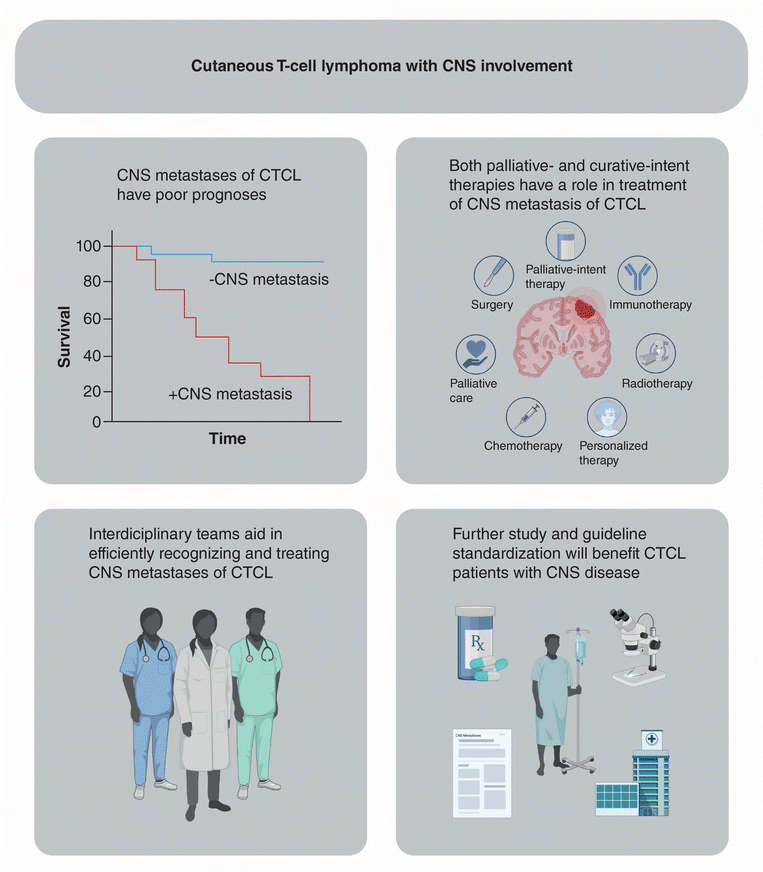Cutaneous T-cell lymphoma with CNS involvement: a case series

Abstract
Cutaneous T-cell lymphoma (CTCL) is a rare hematologic malignancy that traditionally presents with cutaneous lesions, though metastases are not uncommon in progressive disease. We describe four cases of CTCL with central nervous system (CNS) involvement, detailing the history, pathological characteristics, treatment response, and progression. Median time from initial diagnosis to CNS metastasis was ∼5.4 years (range 3.4–15.5 years) and survival after metastasis was ∼160 days (range 19 days–4.4 years). No patients achieved long-term (>5 years) survival, though some displayed varying degrees of remission following CNS-directed therapy. We conclude that clinicians must be attentive to the development of CNS metastases in patients with CTCL. The growing body of literature on such cases will inform evolving therapeutic guidelines on this rare CTCL complication.
Plain language summary
Cutaneous T-cell lymphoma (CTCL) is a rare cancer of the blood, which typically manifests with skin lesions, such as itchy, scaly rashes that may thicken to form tumors on the skin. Though uncommon, metastases do occur in CTCL. A particularly rare location for these metastases is the central nervous system. This case series recounts the story of four unique patients and the presentation, diagnosis, and treatment of their CTCL, which unfortunately progressed to involve the central nervous system. Outcomes with central nervous system involvement in CTCL are poor, but may occur sometime later than a patient’s initial diagnosis. Our patients had a median time from initial diagnosis to central nervous system metastases of ∼5.4 years and a survival of ∼160 days after central nervous system metastases. Some types of therapy, such as radiation, surgery, or chemotherapy, may be beneficial in extending survival or providing symptomatic relief for patients. It can be difficult to recognize symptoms of central nervous system metastases, so this case series emphasizes that vigilance for potential metastases and use of interdisciplinary teams is important in caring for these patients. This case series demonstrates the importance of continued research in this area, with the hope of improving outcomes for patients with central nervous system metastases of CTCL.
Graphical abstract
